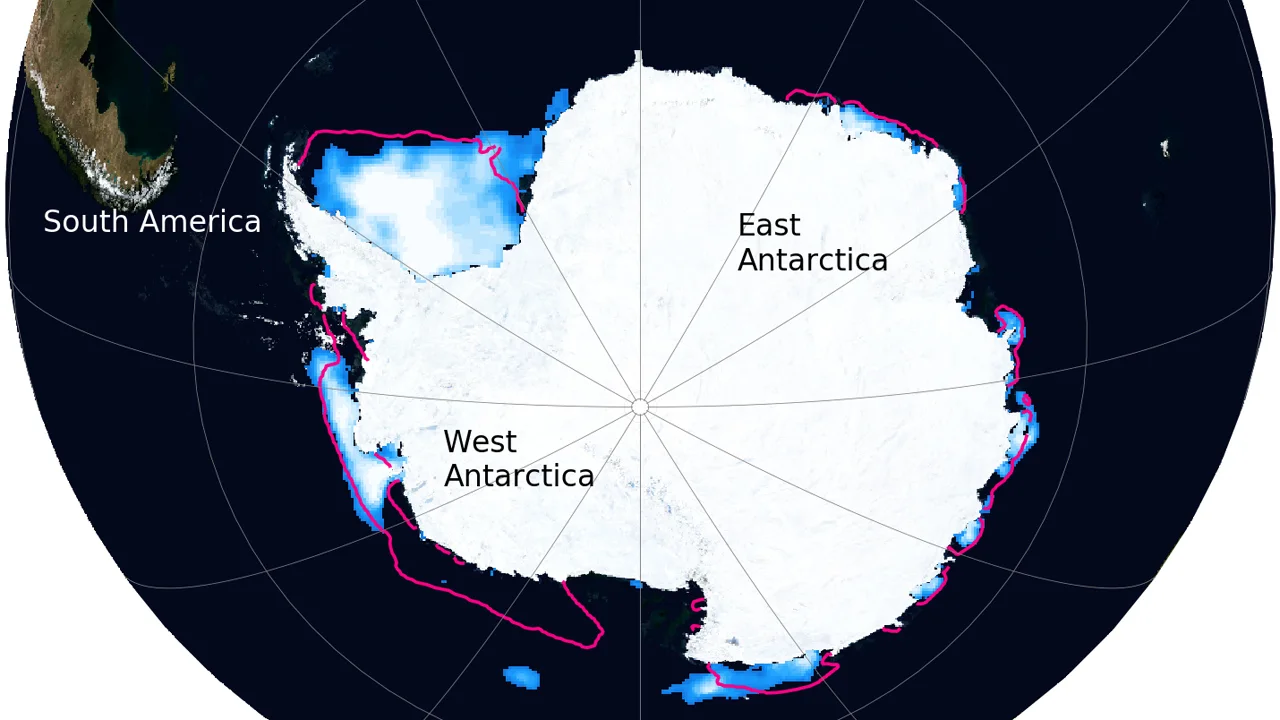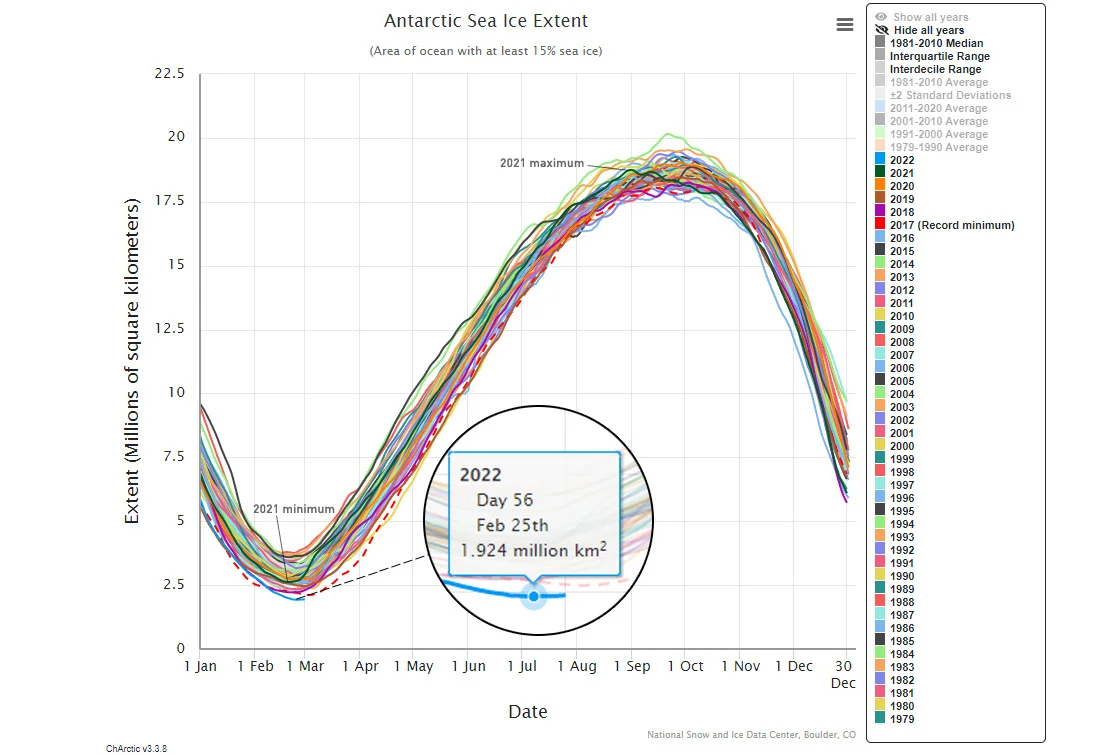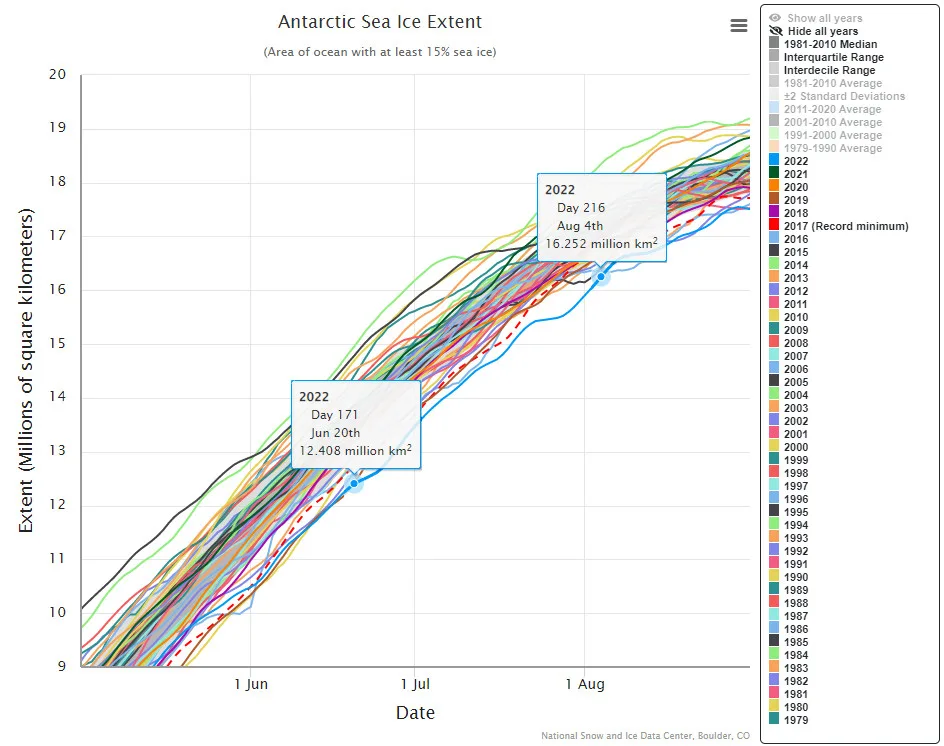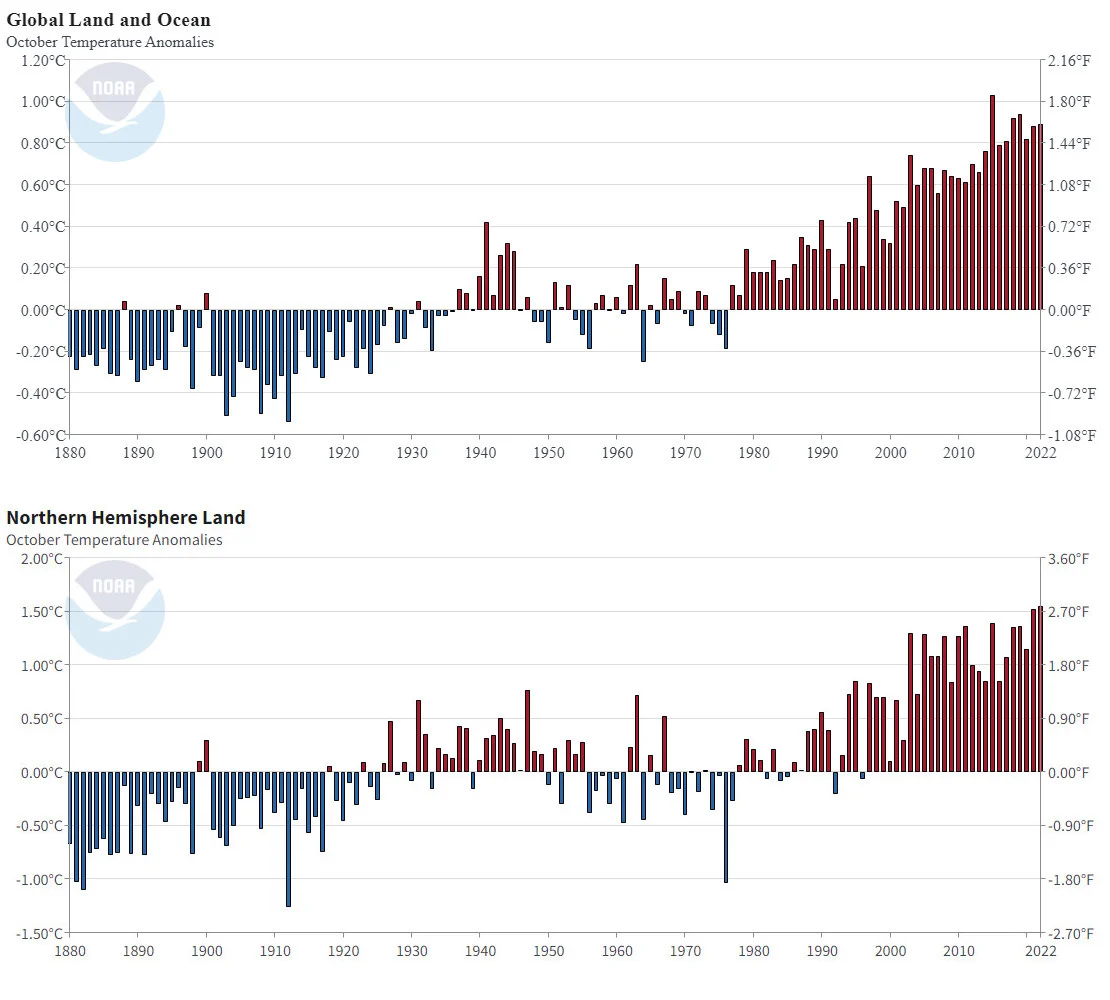
Here are the most severe climate extremes from 2022
Over the past eight years, the impacts of climate change are not only growing worse, the rate at which they are getting worse is accelerating.
Each year, as greenhouse gas concentrations rise, mostly from the burning of fossil fuels, the impacts of climate change are becoming more pronounced. Temperature records are broken, sea ice dwindles, and weather events become more extreme.
Here are the top climate extremes for 2022.
Antarctic sea ice melts away to the lowest summer extent seen on record
Each year, the waters surrounding the continent of Antarctica go through a seasonal cycle of growing and shrinking sea ice. Predictably, the extent of this sea ice increases through the southern hemisphere fall and winter, reaches a maximum in late September, and then shrinks towards a minimum in late February (late summer in the southern hemisphere).
On February 25, 2022, satellites recorded the smallest Antarctic sea ice extent seen since record-keeping began in 1979.

The Charctic interactive sea ice graph plots daily Antarctic sea ice extents from 1979 to 2022, along with the February 25, 2022 record low minimum (inset). (National Snow and Ice Data Center/Scott Sutherland)
Up until 2014, sea ice extents in the southern ocean had been generally increasing. As more snow and ice melted from the continent’s glaciers and ice sheets, more freshwater was flowing into the ocean, where it floated atop the denser salt water and quickly froze. However, with ocean temperatures continuing to rise, that trend appears to have reversed.
Carbon dioxide now at record levels not seen in over 4 million years
Despite climate agreements and a global pandemic, greenhouse gas emissions continue to rise.
In May of 2022, when carbon dioxide levels reached their yearly peak, the Scripps Institution of Oceanography recorded the very first monthly average concentration greater than 420 parts per million at their monitoring station atop Mauna Loa in Hawai’i. Independent measurements by NOAA confirmed this.

This two-year plot of the Keeling Curve shows carbon dioxide concentrations from June 8, 2021 to June 7, 2022. With regards to the levels reached, the timing of these exceedances, and the number of days exceeding, 2022 is breaking all previous records. (Scripps Institution of Oceanography/Scott Sutherland)
In 2021, there were just two days where CO2 levels exceeded 420 ppm at Mauna Loa. This year, there were two months that averaged out to over 420 ppm — May and June.
According to Scripps, the last time CO2 would have been this high in the past was roughly 4.1-4.5 million years ago, during the Pliocene Climatic Optimum.
Even in the midst of winter, Antarctic sea ice sets new record low
After the record minimum Antarctic sea ice extent in February, the ice began to grow soon after. However, in the midst of southern winter, from late June to early August, the extent was once-again at a record low.

This graph of Antarctic sea ice extent focuses on May through September, to highlight the record low values recorded between June 20 and August 4, 2022. (NSIDC/Scott Sutherland)
In a study published in April, researchers described a combination of factors that led to such a record low at such an unusual time of the year. Cooler ocean temperatures across the equatorial Pacific Ocean due to La Niña, warm ocean temperatures experienced elsewhere in the southern hemisphere, and a strong region of low atmospheric pressure off the coast of West Antarctica known as the Amundsen Sea Low, set up a weather pattern that caused more heat to flow from lower latitudes towards the south pole, resulting in more sea ice loss.
Most of humanity just suffered through the hottest October on record
Despite a persistent La Niña pattern in the equatorial Pacific ocean and its cooling influence on the globe, temperature records were still broken in 2022.
In October, NOAA ranked the month as the fourth warmest October since 1880 for the globe.
However, across the entire northern hemisphere, removing the direct influence of La Niña, it ranked as second warmest October. Taking just the areas on land in the northern hemisphere, where nine out of every 10 people alive today live, around 7.2 billion people experienced the hottest October of the past 143 years.

These timelines track global temperature anomalies (top) and northern hemisphere land temperature anomalies (bottom), from October 1880 to the present. While October 2022 was behind 2015, 2019, and 2018, for the globe, it ranked as the warmest month of October across northern hemisphere land, beating out the previous record from 2021. (NOAA NCEI)
Climate impacts are worsening faster than they ever have on record
Perhaps the most alarming news this year came from the World Meteorological Organization’s provisional State of the Climate Report for 2022.
2022 is set to become the new sixth warmest year for the globe, pushing 2021 down into 7th place. The fact that these two years ranked in the top 10 is concerning, as a persistent La Niña has been keeping global temperatures slightly cooler since 2020. Without that cooling influence, we may have already broken 2016’s record, and if there had been a warm El Niño instead, it likely would have guaranteed it.
Glaciers and sea ice are disappearing. Sea level rise is now at its highest rate since record keeping began, and double what it was 30 years ago. Extreme weather events are intensifying. We saw record-breaking heat waves across Europe, China, India, and Pakistan, devastating floods across Pakistan and Madagascar, and intensifying drought conditions in East Africa.
The overall conclusion of the report: over the past eight years, the impacts of human-caused climate change are not only growing worse, the rate at which they are getting worse is accelerating.












